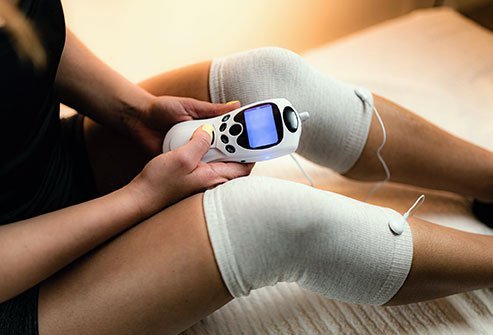Transcutaneous Electrical Nerve Stimulation (TENS)
Electrical nerve stimulation history
For several thousand years, people have recognized that electrical stimulation can have an impact on pain. Hippocrates, the father of medicine, is said to have used electric fish to cause numbness, and a report of gout being “cured” by accidental contact with a fish called an electric ray dates back to the first century. Later reports also described pain resolution that occurred when similar types of “electric” fish were placed on afflicted body parts.
It wasn't until the 18th century when a more formal device to deliver electricity to decrease pain was created. Although initially developed in Europe, Benjamin Franklin is credited with reforming the original electric condenser, which was used to shock patients in an effort to treat various ailments.
What is a transcutaneous electrical nerve stimulation (TENS) unit?

Today, transcutaneous electrical nerve stimulation units, or TENS units, are commonly used to treat many types of pain, including chronic back and neck pain. Unlike the early devices, where the amount of electricity delivered might vary, TENS units supply a controlled electrical current to stimulate nerve endings through surface electrodes, which are placed over the affected region. This reduces the ability of the nerves to send pain signals from an injured area to the brain, relaxes the muscles, and provides temporary pain relief.
How does transcutaneous electrical nerve stimulation work?
The rationale for using a TENS unit for pain control is based on the inability of the spinal cord and peripheral nerves to multi-task -- that is, impulses that are being carried along a pathway within the nervous system effectively block that pathway from transmitting other signals. In essence, flooding a pathway with low-level stimulation keeps pain signals from reaching the brain.
TENS units are reported to work rapidly, although it can take some adjustment to find the correct level of stimulation. Additionally, TENS units are portable, which can improve the mobility of a patient experiencing chronic pain. However, not all types of pain respond to this method of treatment and any effect tends to be short-lived; pain quickly recurs once the stimulator is removed.
Who is a good candidate for transcutaneous electrical nerve stimulation?
Although this therapy isn't for everyone, individuals looking for a relatively inexpensive, well-tolerated treatment option with few side effects may find a TENS unit a good option to explore.
What are the side effects of transcutaneous electrical nerve stimulation?
TENS has few or no side effects on most people. In some patients it may cause a few side effects:
Skin reactions where the electrodes are attached including
- burning or irritation
- allergic reaction
- contact dermatitis
- Nausea and dizziness
- Muscle spasms
- Headache
Skin reactions can often be avoided by keeping the gel pads sanitized and following good skincare. The other reactions are uncommon and can generally be relieved with over-the-counter medicines.
TENS should be used with caution on patients with skin allergies or diseases. It should not be used on a patient who

